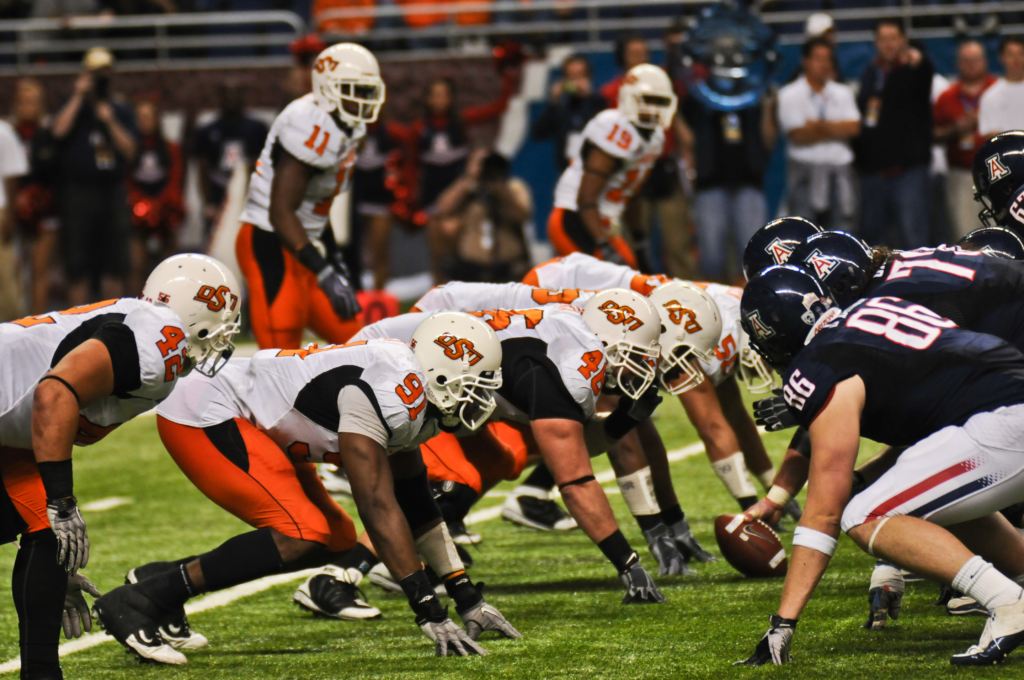If you are a football fan, and watch every play, every once in a while, there is a play that you ask “what was that all about?”. For this writer, it usually is one where the quarterback will try to run the ball through the defensive line and maybe gain a yard, rather than throw the ball for longer yardage.
In looking at the strategy, one could say that what is happening is a test on the defense line, to see if there is a weakness or a break that can be exploited in future plays. It’s not a bad strategy if you have an eye on what to exploit, and why.
But on the flip side, one who tries this tactic out, to see if there is weakness should not be disappointed when the line holds, reinforces and then in the next play, engages in a turnover which then is run for a touchdown.

For Representative Elijah Pierick (Royal Kunia, Village Park, Honouliuli, Hoopili, and Portion of Waipahu), his messaging test of questioning the LGBTQIA+ pride flag at Ewa Makai Middle School in Kapolei (West Oahu), seems to have turned out to be a true loss of yardage on the freshman Representative. The blowback on Rep. Pierick’s video was swift, universal, and loud, even from people who are on “his team” (the Republicans).
While the action and reaction have been well documented, the question of why would Rep. Pierick even delve into this world has yet to be explored.
TO ANYONE who is steeped in Hawaii politics, there are a few “red lines” that, once crossed, those who encroach upon the line will be immediately called to atone for their violation. One of them is making any issue overtly racial. Another one, while not universal in being called out – is anyone who speaks against helping the kupuna (elderly) or keiki (children). Either one of these will immediately bring out a parade of condemnation, amplified by a local press that has never gone beyond the “bleeds it leads” format of news reporting.
And so, predictably, timed almost perfectly to an egg timer, Rep. Pierick’s statement was condemned. The sources of this condemnation were probably the only surprise, with a Republican Senator (Kurt Fevella) calling his words a sin, and the Hawaii State Teachers Assn. and the school principal condemned the statement by thanking their supporters for backing them up.
And then Rep. Pierick was disinvited from a weekend parade celebrating Prince Kuhio’s birthday, with a signal to others that if they’re holding an event, perhaps Rep. Pierick should not be invited to it. The price of stating this message seems pretty steep – ostracization from social events in the district, and condemnation by state and community leaders.
But again, why?

ONE THEORY is that the representative is only speaking for others when he put that out. Who would those people be? One theory could be that mainland interests in the conservative movement, who have money, are looking for representatives like Pierick to invest in. Considering he is a Republican in Hawaii and fundraising for a successful campaign at any level for Republicans can be “challenging”, the attraction of money into a campaign to “promote a message” is quite tempting to some.
So in other words, Pierick is nothing more than a messenger, promoting a point of view that gets him money for the next race.
Another theory, along the lines of a mainland interest looking at Hawaii, is looking to see if there is any weakness in the societal fabric of Hawaii so that a message like this can be exploited in future races. While that may seem farfetched, it stands to reason that the preposterous message of today that people reject becomes the message everyone rallies behind tomorrow.
Those who work and fund these types of campaigns are playing the political long game.
A third theory removes any outside influence and centers the message squarely on Pierick. This theory says that Pierick is convicted to “speak the truth” on how he sees things, that this is simply the execution of his firmly held belief in this and other things. The theory holds if one looks at another freshman representative – Representative Diamond Garcia (Portions of Varona Village, Ewa, and Kapolei, Fernandez Village) – and his statements on other culture war issues related to “critical race theory” in schools.
Regardless of whether either of these theories or another one that may come up is the reason why Rep. Pierick decided to promote this message on the LGBTQIA+ pride flag, the resulting blowback has shown that Hawaii is not allergic to clapping back on potential culture war battlelines and being sure to squelch the issue before it becomes a real issue of debate in Hawaii.
And the resulting squelching only affirms that the D-line that keeps the narrative of “Hawaii contemporary culture”, is held firm in the face of an O-line drive looking for weakness.
